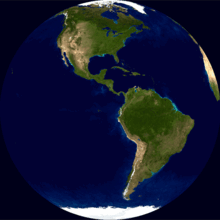|
|
|
_________________
The
continuing set of PowerPoint slides lectured in class are
available here: PowerPoint
SlideSet You may also access videos
of the lectures.
- The
detailed course Noteset
is
provided in Adobe Acrobat Portable Document Format (*.pdf). You
will require an application that can read such files such as
the free Adobe Acrobat reader (see below).
-
For
convenience and especially if you don't have a high-speed ISP
connection, you might download the Noteset
file
onto your own computer. To download, click right mouse button
over blue-underlined link and then choose a <directory>
in
which to save it. It should then load the file directly into
your Acrobat, Preview or other pdf
reader
by simply clicking on the file.
-
If
you have a high-speed connection, you might choose to read
directly from the course website as notes might be updated from
time-to-time during the term. To view the Noteset,
just click left mouse button over the link.
-
Get
the free Adobe reader here:
 -
View
or download the Noteset
-
-
Some interesting and relevant websites for
your further exploration
-
Note that some of the links
may be broken – let me know if they are and I shall try to
replace them.
For
other geophysical maps of Mars (gravity, magnetics, thermal
inertia,) and some interesting images of the planet, visit the
“Global
Views of Mars” page
of the Mars Exploration Program site. From this page, you can
link to much other interesting information about Mars.
Suggestions
for preparing for the final exam:
(The
final exam is not yet scheduled).
Do
the online review quiz that will be posted on Wednesday, April
8. This quiz remains open until the date/time of the final exam.
Explore
Bill Arnett's website "The
Nine Planets". There
you will find a rich resource of materials, both text and
images, that will mostly cover the final exam's questions
concerning the planets. The short-form preview of this year's
final exam is here!
.
This year's final exam will have a very different format (one
that is shortened from recent past years: 50 multiple-choice, 25
true-false, 8 short-answer and one "free opinion"
question).
Another
very nice site for images of the planets and their satellites:
Welcome
to the Planets,
a JPL (Jet Propulsion Laboratory) - NASA (National Aeronautics
and Space Administration) site, and another.... The
Planetary Fact Sheet...
and another... WikiPedia.
And
a site for following the continuing progress of the (Opportunity
and Spirit) and the Cassini-Huygens
Saturn/Titan
mission. You might find Google
Mars and
Google
Moon useful
exploration sites.
It
may be that some stories from the “News
and highlights” web
page will relate to questions on this final but the material of
any such questions will also be found in the notes and covered
in the lectures.
|

